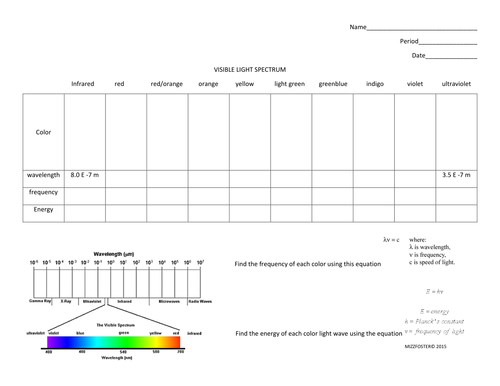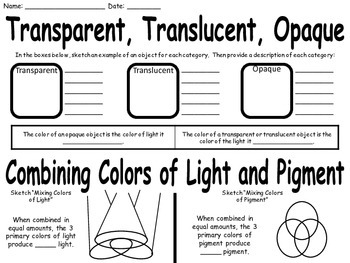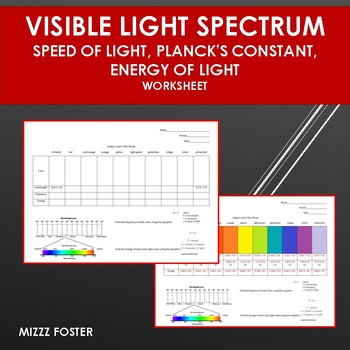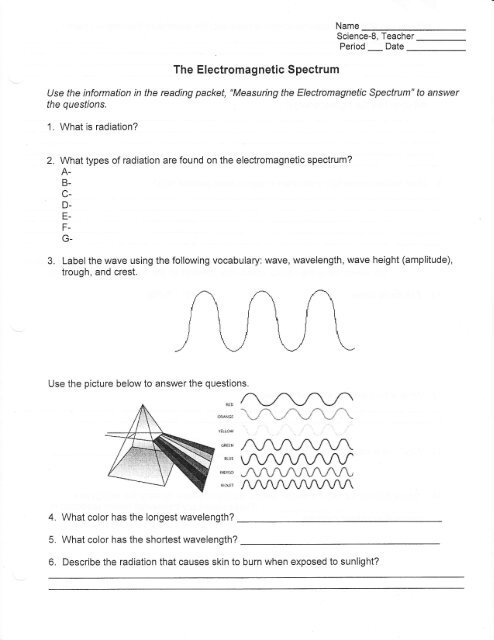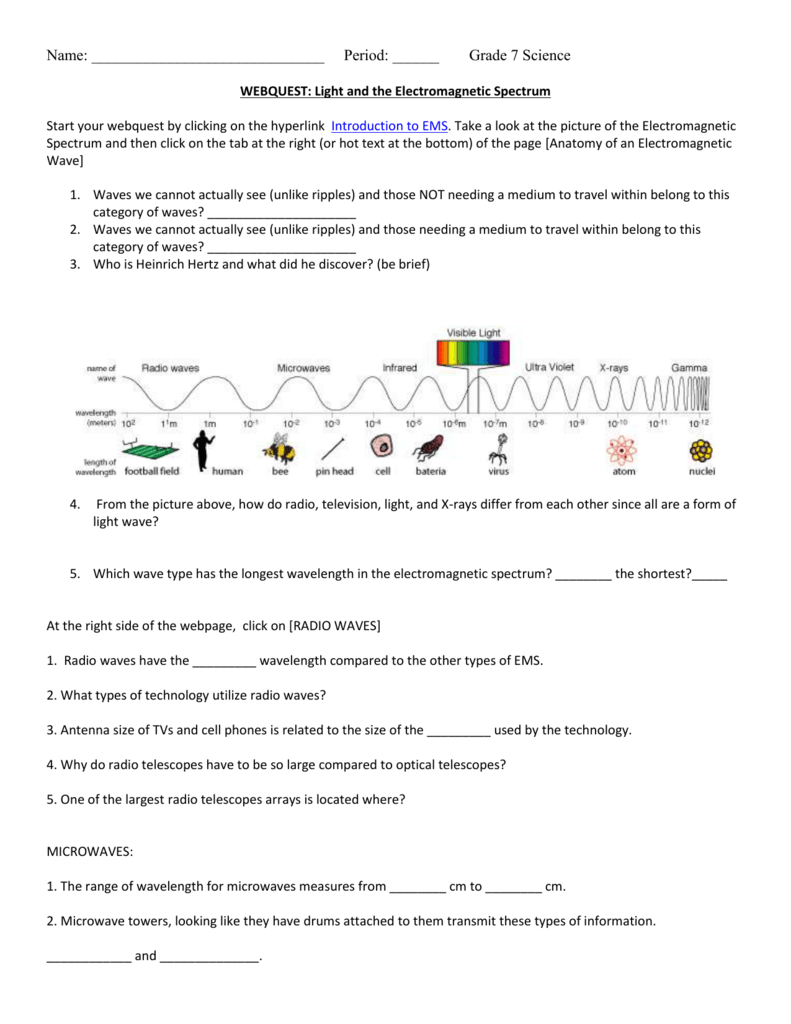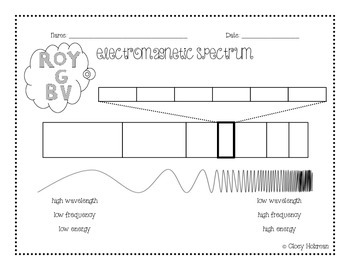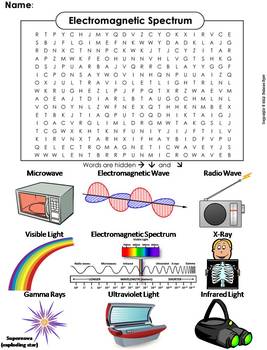Light Spectrum Worksheet

Student groups rotate through four stations to examine light energy behavior.
Light spectrum worksheet. Refraction magnification prisms and polarization. Light is a type of energy. Visible light is the part of the electromagnetic spectrum that our eyes can detect and so is the part we are most familiar with in our everyday lives. The red words in this web site are the key ones.
Where do the waves come from. Change the wavelength of a monochromatic beam or filter white light. A brief note for ks 3 students especially year 8 students. It is a small part of the electromagnetic spectrum and radiation given off by stars like the sun.
Conceptual ideas develop logically and sequentially ultimately leading into the mathematics of the topics. How light travels from luminous sources. What gives a male cardinal his bright red feathers. They also discover how a prism.
Click on the symbol of an element to see its atomic emission spectrum if no link no spectrum known. Each lesson includes informative graphics occasional animations and videos and check your understanding sections that allow the user to practice what is taught. Why is an orange well orange. In addition they are introduced to the various types of waves that make up the electromagnetic spectrum including radio waves ultraviolet waves visible light and infrared waves.
It is a form of electromagnetic radiation of a wavelength which can be detected by the human eye. The physics classroom tutorial presents physics concepts and principles in an easy to understand language. In this topic you will learn about 1. View the light as a solid beam or see the individual photons.
Students learn the basics of the electromagnetic spectrum and how various types of electromagnetic waves are related in terms of wavelength and energy. They see how a beam of light is refracted bent through various transparent mediums. What makes a plant green. The properties of light.
While learning how a magnifying glass works students see how the orientation of an image changes with the distance of the lens from its focal point. Classify transparent translucent and opaque materials b.


